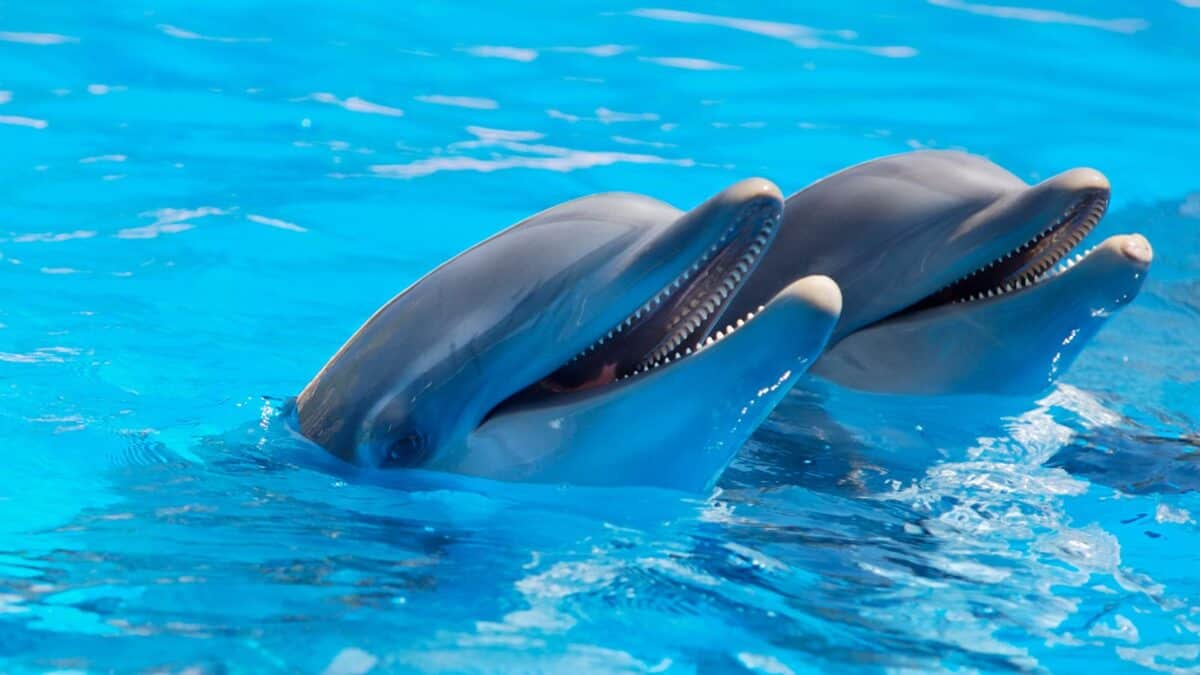The ocean, covering over 70% of our planet, is home to an incredible diversity of life. While many of us imagine that observing marine creatures requires expensive diving equipment or boat trips, numerous fascinating ocean dwellers can actually be spotted right from the shoreline. From common coastal visitors to occasional rarities, these creatures offer a glimpse into the wonders of marine ecosystems without requiring you to get your feet wet. Whether you’re a casual beachgoer or an eager wildlife enthusiast, knowing what to look for can transform an ordinary beach visit into an exciting wildlife watching expedition. This guide explores 13 remarkable ocean creatures you can observe from beaches, piers, and coastal viewpoints around the world.
Harbor Seals

Harbor seals (Phoca vitulina) are among the most commonly spotted marine mammals from shorelines in temperate coastal regions. With their distinctive spotted coats ranging from silvery-gray to dark brown and their dog-like faces, these charismatic creatures often haul out on rocks, beaches, and floating platforms to rest and sunbathe. Adults typically reach 5-6 feet in length and weigh between 180-285 pounds. Unlike their relatives the sea lions, harbor seals lack external ear flaps and move on land with a distinctive belly-crawling motion rather than using their flippers to walk. The best time to observe harbor seals is during low tide when they gather in groups, though they’re naturally curious and may pop their heads above water to observe beach visitors. Popular viewing locations include the coasts of New England, the Pacific Northwest, Alaska, and northern Europe. Remember to maintain a respectful distance of at least 100 yards to avoid disturbing these federally protected animals.
Bottlenose Dolphins

Bottlenose dolphins (Tursiops truncatus) are among the most recognizable and beloved ocean mammals visible from shore. These intelligent cetaceans are regular visitors to coastal waters worldwide, from temperate to tropical regions. Growing to 10-14 feet in length and weighing 300-1,400 pounds, their curved “smiling” mouths easily identify them and prominent dorsal fins. Bottlenose dolphins often hunt in shallow waters, particularly during early morning or late afternoon when fish are most active. Watching from the shore, you might witness them engaging in spectacular behaviours, including porpoising (leaping partially out of water), bow-riding alongside boats, or even strand-feeding—a specialized technique where they drive fish onto muddy banks before temporarily beaching themselves to feed. Coastal hotspots for dolphin viewing include Sanibel Island in Florida, Monterey Bay in California, and numerous locations along the Gulf of Mexico. For the best chance of spotting them, scan the water for their distinctive dorsal fins breaking the surface or the splashes from their energetic activities.
Sea Otters

Sea otters (Enhydra lutris) represent one of the most delightful marine mammals observable from shore along the Pacific coast of North America. These charismatic creatures, measuring about 4 feet long and weighing 35-90 pounds, are the smallest marine mammals but have the densest fur of any animal—up to one million hairs per square inch. Unlike most marine mammals, they lack blubber and instead rely on their exceptional fur and high metabolism to maintain body temperature. Sea otters are easily recognized by their habit of floating on their backs, often using their bellies as dining tables while they crack open shells with rocks. They’re frequently spotted in kelp forests and protected bays, where they gather in groups called rafts that can sometimes number over 100 individuals. Prime viewing locations include Monterey Bay and Morro Bay in California, as well as coastal Alaska. Morning and late afternoon offer optimal viewing opportunities when otters are actively feeding. Their playful nature, tool use, and keystone ecological role make them fascinating subjects for shore-based wildlife watchers.
California Sea Lions

California sea lions (Zalophus californianus) are boisterous, highly social marine mammals readily observable from numerous coastal locations along the western coast of North America. Males are significantly larger than females, reaching lengths of 7-8 feet and weights up to 800 pounds, with a distinctive sagittal crest (raised forehead) developing as they mature. These vocal animals produce a variety of barks, growls, and roars that can be heard from considerable distances. Unlike true seals, sea lions have external ear flaps and rotate their rear flippers forward to “walk” on land, giving them remarkable mobility when hauled out. They gather in large colonies on rocky outcroppings, piers, and beaches, making them easy to spot from shore. Famous viewing locations include Pier 39 in San Francisco, where hundreds gather seasonally, and Channel Islands National Park in California. During breeding season (May-August), males establish territories and compete for females, creating dramatic displays of dominance. Their acrobatic swimming abilities, playful nature, and intelligence (demonstrated in numerous marine park shows) make them captivating animals to observe in their natural habitat.
Manatees

Manatees (Trichechus manatus), often called “sea cows,” are gentle, slow-moving marine mammals that can be spotted from shorelines in Florida and other warm, shallow coastal waters throughout the Caribbean and Gulf of Mexico. These massive herbivores typically measure 9-10 feet in length and weigh between 800-1,200 pounds, with some exceptional individuals reaching over 3,500 pounds. Despite their bulk, manatees are graceful swimmers, propelling themselves with powerful tail flukes while using their front flippers for steering and bringing vegetation to their mouths. Their gray-brown bodies often bear unique scar patterns from boat propellers, helping researchers identify individuals. Manatees can be observed from shore when they surface to breathe every 3-5 minutes, and they’re especially visible in winter months when they gather in warm water refuges like springs and power plant outflows. Prime viewing locations include Blue Spring State Park and Manatee Springs State Park in Florida, where elevated boardwalks provide excellent vantage points. During cold weather, dozens or even hundreds may congregate in these thermal sanctuaries, offering spectacular viewing opportunities. These endangered animals face numerous threats from boat strikes, habitat loss, and climate change, making respectful observation particularly important.
Whales (Various Species)
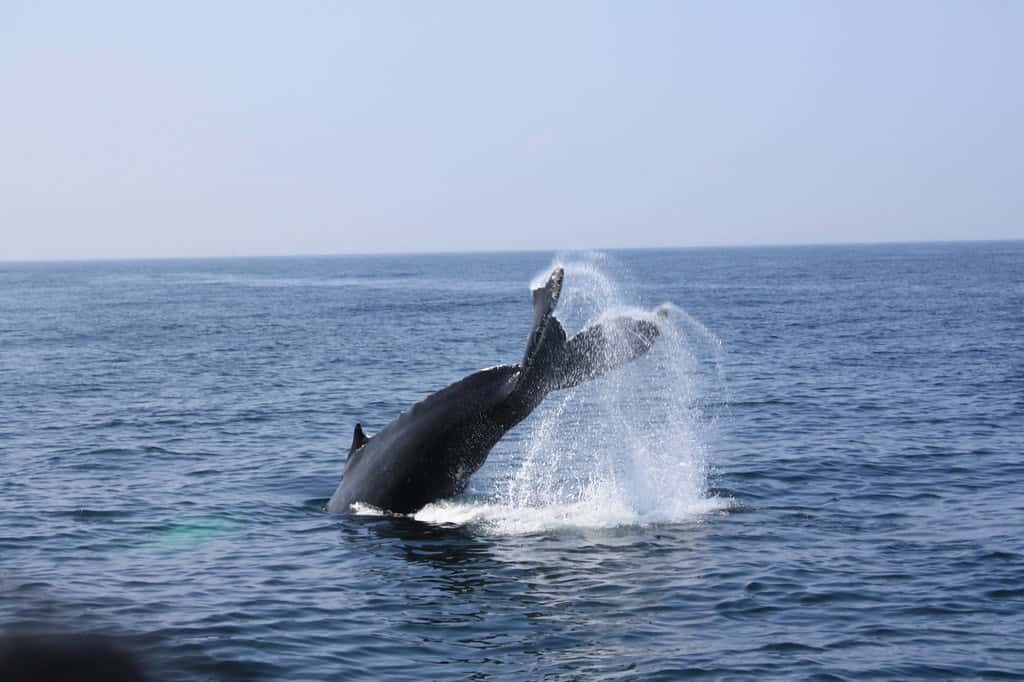
Several whale species make seasonal appearances close enough to coastlines to be visible from shore. Gray whales (Eschrichtius robustus) undertake one of the longest migrations of any mammal, traveling up to 12,000 miles round trip between Arctic feeding grounds and Mexican calving lagoons. During this journey, they often swim within a mile of the coastline, making them visible from shore along the western coast of North America, particularly from December through May. Humpback whales (Megaptera novaeangliae) are also observable from certain coastal vantage points, especially in areas where deep water occurs close to shore. Their distinctive behaviors like breaching (jumping completely out of water) and tail-slapping create spectacular displays visible from considerable distances. In places like Cape Cod, Massachusetts, Hawaii, and parts of California, specialized whale watching platforms offer elevated viewing positions. Even massive blue whales (Balaenoptera musculus), the largest animals ever to have existed on Earth, occasionally venture close enough to shore to be spotted from coastal promontories in locations like the Channel Islands of California and Monterey Bay. Binoculars significantly enhance whale watching from shore, allowing observers to spot the misty “blows” of exhaled breath that often reveal a whale’s presence long before the animal itself becomes visible.
Manta Rays

Manta rays (Mobula birostris and Mobula alfredi) represent some of the most awe-inspiring fish observable from shorelines in tropical and subtropical regions. These graceful giants, with wingspans reaching up to 23 feet and weights exceeding 3,000 pounds, are filter feeders that consume vast quantities of plankton and small fish. Their distinctive diamond shape and prominent cephalic fins (which resemble horns and give them the nickname “devil rays”) make them unmistakable when they breach or swim near the surface. Unlike stingrays, mantas lack a venomous barb on their tails and are completely harmless to humans. Certain predictable feeding aggregations bring mantas close to shore, particularly at high tide or during plankton blooms. Notable viewing locations include Manta Point in Bali, certain beaches in Hawaii including Kona, and parts of the Maldives and Mozambique where specialized “manta ray overlooks” have been established. Night viewing opportunities exist in areas where lights are directed into the water, attracting plankton and subsequently feeding mantas. These magnificent creatures, listed as vulnerable to extinction, perform mesmerizing underwater acrobatics, sometimes leaping completely clear of the water in spectacular breaches believed to serve purposes ranging from parasite removal to communication.
Sea Turtles

Sea turtles, ancient mariners that have navigated Earth’s oceans for over 100 million years, can be observed from shorelines worldwide. The most commonly spotted species include green turtles (Chelonia mydas), loggerheads (Caretta caretta), and hawksbills (Eretmochelys imbricata). These remarkable reptiles must surface to breathe, making their distinctive round heads visible as they peek above water. During nesting season, female turtles emerge on beaches after dark to lay eggs, providing a rare and magical shore-based viewing opportunity in places like Tortuguero in Costa Rica, parts of Florida, and numerous Caribbean islands. Protected viewing experiences guided by conservation organizations allow visitors to witness this ancient ritual without disturbing the sensitive nesting process. In Hawaii and parts of the Caribbean, green turtles frequently bask on beaches—a behavior called “basking”—offering excellent observation opportunities during daylight hours. Through binoculars, observers can spot sea turtles feeding in shallow water, particularly in areas with seagrass beds or coral reefs close to shore. All sea turtle species face significant threats from habitat destruction, plastic pollution, fishing bycatch, and climate change, with most classified as endangered or critically endangered. Responsible shore-based observation follows strict guidelines, including maintaining distance, avoiding flash photography, and never interfering with nesting activities.
Crabs and Tide Pool Creatures

The intertidal zone—that dynamic region between high and low tide—harbors an astonishing diversity of easily observable marine life. Various crab species dominate these environments, from the massive red rock crabs (Cancer productus) of the Pacific Northwest to the lightning-quick ghost crabs (Ocypode spp.) that scuttle across Atlantic beaches. During low tide, careful exploration of rocky tide pools reveals miniature ecosystems teeming with colorful life: purple and orange sea stars, green anemones that retract when gently touched, hermit crabs occupying scavenged shells, and mosaic-patterned chitons clinging to rocks. The kaleidoscopic collection often includes vivid sea slugs called nudibranchs, delicate brittle stars, and small fish trapped until the next high tide. Barnacles, though appearing static, are actually crustaceans that extend feathery appendages to filter food particles when submerged. This accessible marine environment serves as a natural aquarium that changes with each tidal cycle. The best tide pooling experiences occur during negative tides (exceptionally low tides that expose areas normally underwater), particularly on rocky shorelines. For safe and responsible exploration, visitors should wear appropriate footwear to prevent slips on algae-covered surfaces, step carefully to avoid crushing sensitive organisms, refrain from removing creatures from their homes, and always respect closed or protected areas designated for conservation.
Jellyfish
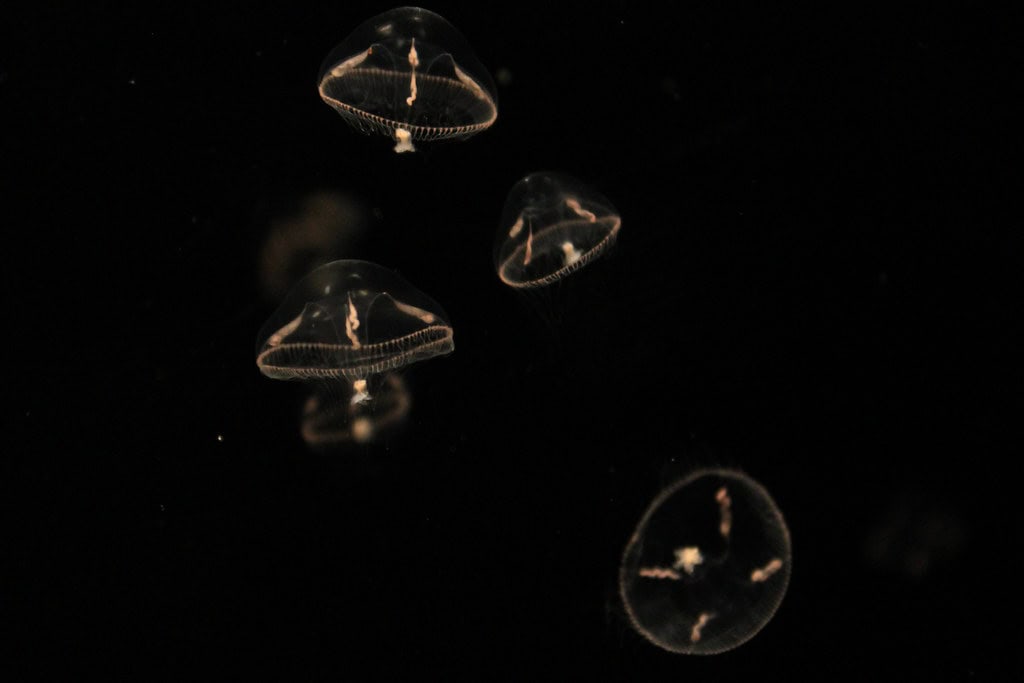
Jellyfish, among Earth’s oldest multicellular animals with a history spanning over 650 million years, frequently approach shorelines where they can be safely observed without direct contact. These gelatinous creatures range dramatically in size and appearance, from the massive lion’s mane jellyfish (Cyanea capillata) with tentacles extending over 100 feet to the diminutive sea thimble jellyfish barely larger than a quarter. Their translucent bodies create living light shows as sunlight filters through their bell-shaped structures, while many species produce their own bioluminescent glow when disturbed at night. Contrary to common belief, jellyfish don’t actively swim but instead pulse their bells to create weak propulsion while largely drifting with currents—a characteristic that frequently brings them into shallow coastal waters visible from shore. Population explosions called “blooms” can result in thousands washing onto beaches or filling harbors, particularly during certain seasonal conditions that favor reproduction. While many jellyfish possess stinging cells (nematocysts) that can be painful or even dangerous to humans, careful shore-based observation poses no risk. Certain protected bays and harbors, including Monterey Bay in California and various Mediterranean locations, regularly host predictable jellyfish aggregations. Some species, like the harmless moon jellyfish (Aurelia aurita) with its distinctive four-leaf clover pattern visible through its transparent bell, are particularly common coastal visitors recognizable even to novice observers.
Sharks

Contrary to their fearsome reputation, numerous shark species regularly patrol coastal waters where they can be observed from the safety of shore. The leopard shark (Triakis semifasciata), with its distinctive dark saddle markings on a silvery-bronze background, frequently ventures into extremely shallow water along the Pacific coast, sometimes in aggregations of hundreds during breeding season. In tropical regions, the unmistakable dorsal fin of blacktip reef sharks (Carcharhinus melanopterus) can often be spotted cutting through shallow lagoons as they hunt small fish. Even the occasional larger shark species like great whites (Carcharodon carcharias) sometimes hunt close enough to shore to be visible from elevated coastal viewpoints in hotspots like South Africa’s False Bay or parts of California during seasonal seal hunting periods. Shore-based shark observation has become increasingly popular, with dedicated shark watching platforms established in locations like Shark Point in Australia and certain Hawaiian beaches where regular feeding patterns bring sharks predictably close to shore. The silhouettes of these ancient predators, essentially unchanged for millions of years, remind us of the ocean’s wild nature even at its edges. Despite media portrayals, the vast majority of coastal shark species pose minimal threat to humans, with most preferring their natural prey and actively avoiding people. Their presence actually indicates healthy marine ecosystems, as sharks serve as crucial apex predators maintaining balance throughout ocean food webs.
Shorebirds
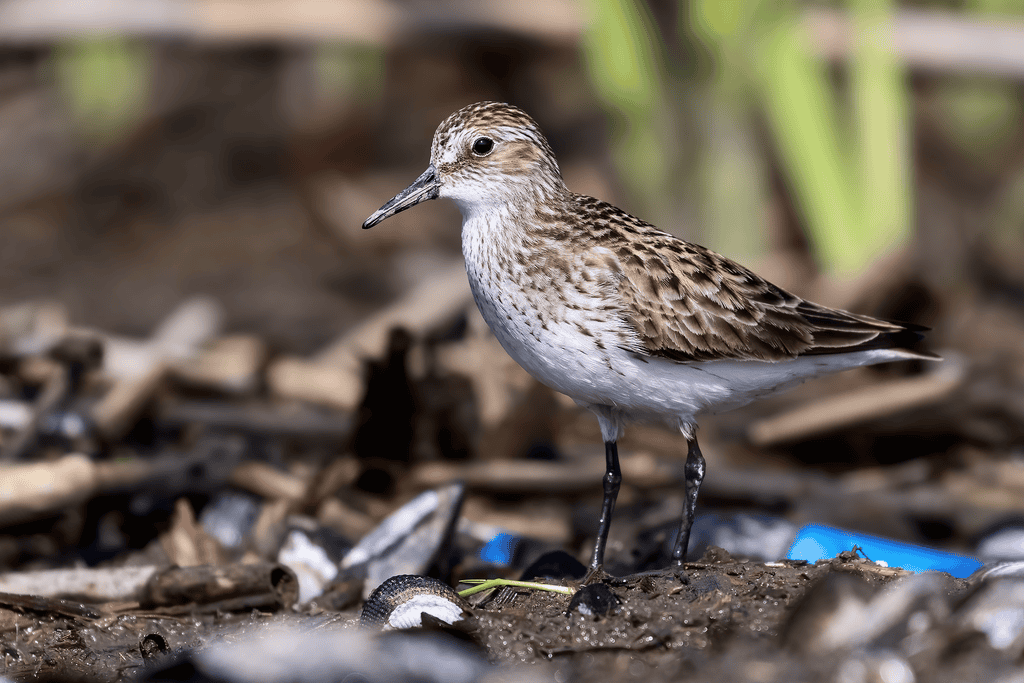
The boundary between land and sea hosts an impressive variety of specialized birds adapted to exploit the rich resources of coastal environments. Sandpipers, sanderlings, and plovers form chattering groups that rush up and down beaches with receding and advancing waves, probing sand with specialized bills to extract tiny crustaceans, mollusks, and worms. Larger waders like great blue herons and egrets stand statue-still in shallow waters before striking with lightning speed to spear fish. Coastal raptors including ospreys and sea eagles perform spectacular fishing dives visible from shore, plunging from height to snatch prey before shaking off water in dramatic displays. Colonial nesters such as pelicans, cormorants, and various gull species gather on offshore rocks and islands visible through binoculars, creating noisy, bustling bird cities. Migratory seasons bring particularly impressive concentrations as birds journey between summer breeding grounds and winter territories, sometimes stopping at crucial coastal feeding locations in flocks numbering thousands. Specialized adaptations become evident through careful observation: the oystercatcher’s bright orange bill perfectly shaped for prying open shellfish, the extraordinary pouch beneath a pelican’s bill capable of holding several gallons of water during feeding dives, or the skimmer’s unique lower-jaw extension that cuts through water’s surface to snatch fish. Coastal headlands and estuaries provide excellent vantage points for observing these specialized avian ocean hunters, with mornings and evenings typically offering peak activity periods.
Conclusion and Viewing Tips
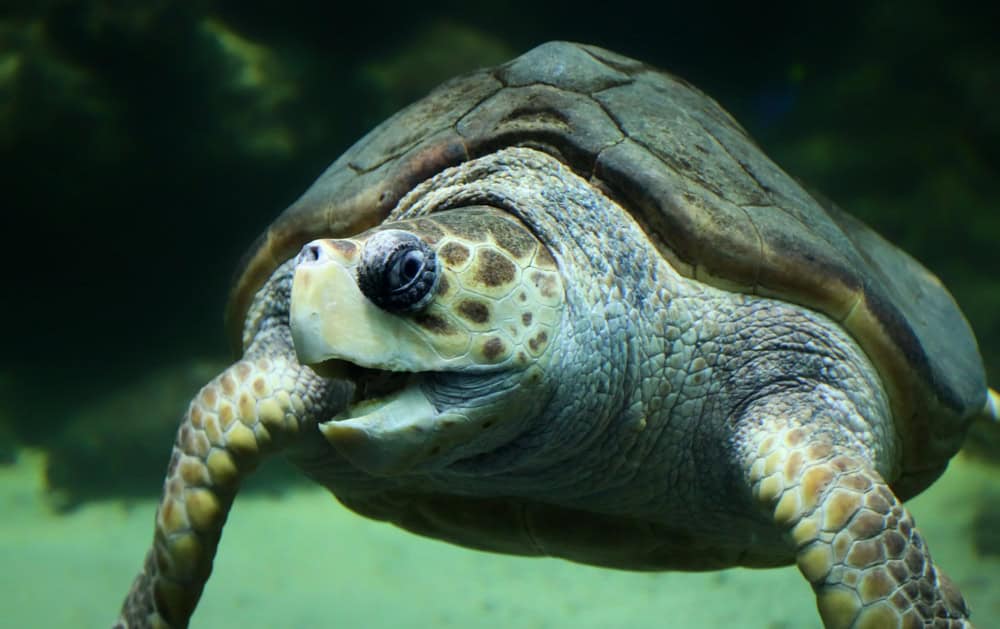
The shoreline serves as nature’s perfect observation platform for experiencing marine life without expensive equipment or specialized training. The creatures highlighted in this guide represent just a fraction of the possible wildlife encounters awaiting coastal visitors who approach beaches with observant eyes and patient attitudes. To maximize your shore-based ocean wildlife viewing experiences, timing proves crucial—early mornings and late afternoons typically offer peak activity periods coinciding with feeding cycles for many species, while seasonal migrations and reproductive patterns create predictable windows for observing certain creatures. Essential equipment includes binoculars (preferably waterproof), polarized sunglasses to reduce glare off water surfaces, a field guide relevant to your region, and a camera with zoom capabilities to document sightings. Remember that responsible wildlife viewing means
- The Most Beautiful Bird Migration Routes Across the US - August 9, 2025
- 14 Dog Breeds That Love to Cuddle - August 9, 2025
- 11 Signs Your Horse Might Be Bored - August 9, 2025

